All the times are local Hong Kong Time (HKT).
| Session Number |
Time (HK Time) |
Talk | Speaker | Virtual Poster Session |
| 1 | 8:30-8:45HKT |
Opening |
Prof. A. K. Srivastava / Prof. Tim Cheng |
*30 posters Breakout rooms on Zoom |
| 10:45-11:00HKT | Tea Break | |||
| 2 | 11:00-11:30HKT |
Invited -4 |
Prof. Volkan Demir (NTU) Prof. Jianpu Wang (Nanjing Tech. U) Prof. Jonathan Halpert (HKUST) (Chair) |
|
| 13:00-14:00HKT | Lunch Break / Poster Session | |||
| 3 | 14:00-14:30HKT |
Invited -8 |
Prof. Kristiaan Neyts (Ghent University) |
|
| 16:00-16:15HKT | Tea Break | |||
| 4 | 16:15-16:45HKT |
Invited -12 |
Prof. Andrey Rogach (CityU) (Chair) |
|
| 5 | 18:15HKT | Conclusion | Prof. A. K. Srivastava/ Prof. Bertram SHI | Awards |
Organic Electronics – Retrospective and Outlook
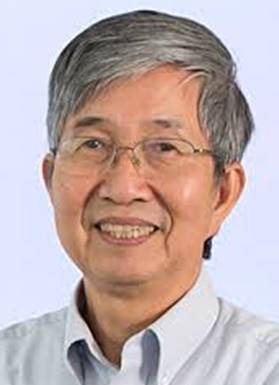
Prof. Ching W. Tang
Institute for Advanced Study
Hong Kong University of Science and Technology
Clear Water Bay, Hong Kong
Email: chingtang@ust.hk
In 1986-89 and with my colleagues at the Kodak Research Laboratories I published three papers1-3 which have been credited with the rebirth of a field now known as organic electronics. The first paper discloses a thin-film, organic photovoltaic (OPV) cell capable of achieving a solar power conversion efficiency of 1%. The other two papers describe an electroluminescent diode (now known as OLED) which demonstrated an electricity-to-light power conversion efficiency of about 1% in addition to being readily tunable in emission color. These novel optoelectronic devices - based on organic semiconductors - have in common a bi-layer, heterojunction structure which holds the key to the device performance. With decades of research, development, and manufacturing efforts, OLED stands out as the only organic electronic device that has achieved commercial success in being widely adopted in today’s display products, including smartphones and televisions.
In this talk, I will trace the development of OLED display technology and offer an assessment of its outlook in view of the display industry’s competitive landscape.
References
- C.W. Tang, Appl. Phys. Lett. 48, 183(1986)
- C.W. Tang and S.A. VanSlyke, Appl. Phys. Lett. 51, 913 (1987)
- C.W. Tang, S.A. VanSlyke and C.H.Chen, J. Appl. Phy. 65, 3610 (1989)
Semiconductor Nanowires for Display Applications
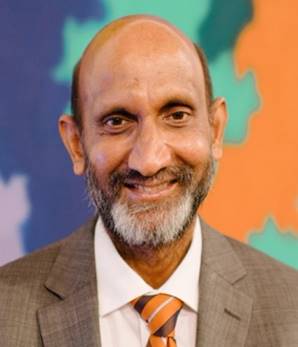
Prof. Chennupati Jagadish,
AC, MNAE (US), FAA, FTSE, FTWAS, FNAI, FNA, FNAE, FASc, FAPAS, FEurASc, FNASc
Research School of Physics
The Australian National University
Canberra, ACT 2601, Australia
Email: c.jagadish@ieee.org
Semiconductors have played an important role in the development of information and communications technology, solar cells, solid state lighting. Nanowires are considered as building blocks for the next generation electronics and optoelectronics. In this talk, I will introduce the importance of nanowires and their potential applications and discuss about how these nanowires can be synthesized and how the shape, size and composition of the nanowires influence their structural and optical properties. I will present results on axial and radial heterostructures and how one can engineer the optical properties to obtain high performance lasers and LEDs for display applications. Future prospects of the semiconductor nanowires will be discussed.
Biography: Prof. Jagadish is a Distinguished Professor and Head of Semiconductor Optoelectronics and Nanotechnology Group in the Research School of Physics, Australian National University. He has served as Vice-President and Secretary Physical Sciences of the Australian Academy of Science during 2012-2016. He is currently serving as Past President of IEEE Photonics Society, Past President of Australian Materials Research Society. Prof. Jagadish is the Editor-in-Chief of Applied Physics Reviews, Editor of 3 book series and serves on editorial boards of 19 other journals. He has published more than 950 research papers (680 journal papers), holds 5 US patents, co-authored a book, co-edited 15 books and edited 12 conference proceedings and 18 special issues of Journals. He has won the 2000 IEEE Millennium Medal and received Distinguished Lecturer awards from IEEE NTC, IEEE LEOS and IEEE EDS. He is a Foreign Member of US National Academy of Engineering, Fellow of the Australian Academy of Science, Australian Academy of Technological Sciences and Engineering, The World Academy of Sciences, US National Academy of Inventors, Indian National Science Academy, Indian National Academy of Engineering, Indian Academy of Sciences, National Academy of Sciences of India, IEEE, APS, MRS, OSA, AVS, ECS, SPIE, AAAS, FEMA, APAM, IoP (UK), IET (UK), IoN (UK) and the AIP. He received many awards including IEEE Pioneer Award in Nanotechnology, IEEE Photonics Society Engineering Achievement Award, OSA Nick Holonyak Jr Award, Welker Award, IUMRS Somiya Award, UNESCO medal for his contributions to the development of nanoscience and nanotechnologies and Lyle medal from Australian Academy of Science for his contributions to Physics, Beattie Steel Medal from Australian Optical Society and IEEE Education Award from Electron Devices Society. He has received Australia’s highest civilian honor, AC, Companion of the Order of Australia, as part of 2016 Australia day honors from the Governor General of Australia for his contributions to physics and engineering, in particular nanotechnology.
Challenging of Ink-Jet Printed Quantum-Dots Light-emitting Diodes towards Mass Production

Dr. Longjia Wu (TCL, China)
Display Technology Expert
TCL Research
Shenzhen, China
Email: wulongjia@tcl.com
Quantum dot light emitting diodes (QLEDs) that electrically excite quantum dots (QDs) are the future of QD displays, owning to the excellent optical properties of QDs, such as narrow emission spectra, size-controlled emission wavelength, high quantum yield and inherent stability. And Ink-Jet printing (IJP) technique is the most promising mass production method for QLEDs. However, with the rapid enhancement in devices’ performance over the past two decades, IJP QLEDs still face critical challenges towards commercialization. In this report, I will show our strategies on how to overcome the challenging of IJP QLEDs towards mass production.
Biography: Dr. Longjia Wu received his Ph.D. degree in Materials Science and Engineering major from University of California, Davis (UC Davis) in 2015. After graduation, he joined TCL Research, engaging in the development of high performance quantum-dot light-emitting diodes for display application. Now he is a Display Technology Expert in TCL Research, who is in charge of the development of charge transporting materials in QLED and decoding the degradation mechanism of the device.
Colloidal Semiconductor Nanocrystals: Shape Matters
 Prof. Guohua Jia
Prof. Guohua Jia
Curtin Institute of Functional Molecules and Interfaces,
School of Molecular and Life Sciences,
Curtin University,
Bentley, Perth WA, 6102,
Australia
Email: guohua.jia@curtin.edu.au
Colloidal semiconductor nanocrystals manifest size- and shape-dependent optical and electronic properties and find wide applications in optoelectronics. In this talk, I will elaborate how the size, composition and morphology of nanocrystals can be controlled and be further self-assembled into hierarchical architectures via regulating a broad scope of factors ranging from surface energy, monomer, binding ligand to temperature from a physical perspective. The optical, electronic and catalytic properties of this type of intriguing materials have been interpreted based on the structure-property relationships and their applications in optoelectronics, catalysis and latent fingermark detections have been demonstrated.
References
- C. Zhang, J. Chen, S. Wang, L. Kong, S.W. Lewis, X. Yang*, A.L. Rogach*, G. Jia, Adv. Mater.2020, 32, 2002736.
- S. Wang, J. Yu, M. Zhang, D. Chen, C. Li, R. Chen*, G. Jia*, A. L. Rogach*, X. Yang, Nano Lett. 2019, 19, 6315.
- Y. Pang, N. Uddin, W. Chen, S. Javaid, E. Barker, Y. Li*, A. Suvorova, M. Saunders, Z. Yin*, G. Jia, Adv. Mater. 2019, 31, 1905540.
- G. Jia*, Y. Pang, J. Ning*, U. Banin*, B. Ji*, “Heavy-Metal Free Colloidal Semiconductor Nanorods: Recent Advances and Future Perspectives”, Adv. Mater.2019, 31, 1900781.
- D. Chen, H. Zhang, Y. Li, Z. Yin, H. Sun, L.C. Zhang, S. Wang, M. Saunders, E. Barker, G. Jia, Adv. Mater. 2018, 30, 1803351.
- W. Chen, X. Li, F. Wang, S. Javaid, Y. Pang, J. Chen, Z. Yin, S. Wang*, Y. Li*, G. Jia, Small 2020, 16, 1902231.
- A. Wang*, W. Wang, J. Chen, R. Mao, Y. Li*, W. Chen, D. Chen, D. Hao, B.-J. Ni, M. Saunders, G. Jia, J. Phys. Chem. Lett. 2020, 11, 4990.
- Y. Pang, M. Zhang, D. Chen, W. Chen, S. Anwar, M. Saunders, M. R. Rowles, A. Sitt*, C. Li*, G. Jia, J. Phys. Chem. Lett. 2019, 12, 3465
- S. Shahbazi, D. Chen, G. Jia*, S. Lewis, Sci. Justice 2020, just accepted. DOI: 10.1016/j.scijus.2020.09.008
- S. Shahbazi, R. Boseley, B. Grant, D. Chen, T. Becker, O. Adegoke, N. N. Daéid, G. Jia, S. W. Lewis, Forensic Chem. 2020, 18, 100222.
Biography: Prof. Guohua Jia is a senior lecturer/senior research fellow in the School of Molecular and Life Sciences at Curtin University in Australia. He received his PhD in Chemistry from City University of Hong Kong in 2009 under the supervision of Prof. Peter A. Tanner. From 2010 to 2014 he has conducted postdoctoral research in Prof. Uri Banin’s group at Hebrew University of Jerusalem in Israel. In 2015, he commenced his independent career as a Curtin Early Career Research Fellow at Curtin University where he established a diverse research program in colloidal semiconductor nanocrystals, with particular emphasis on their size, shape and composition-dependent properties and their applications in optoelectronics and catalysis. He is a recipient of an ARC Discovery Early Career Researcher Award (2016-2019) and an inventor for two US patents (one granted and one is in PCT stage). Guohua received a number of prestigious awards including the Curtinnovation Awards (2018) and J G Russell Award from the Australian Academy of Science (2016). For more information go to Guohua’s webpage: https://ghjia10.wixsite.com/jialab.
Colloidal Quantum Wells for Lighting and Displays
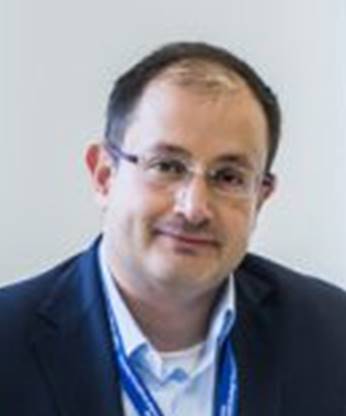
Prof. Hilmi Volkan Demir
NTU Singapore – Nanyang Technological University, School of Electrical Engineering, School of Physical and Mathematical Sciences, School of Materials Science and Engineering, Singapore
Bilkent University UNAM, Department of Electrical and Electronics Engineering, Department of Physics, Institute of Materials Science and Nanotechnology, Ankara, Turkey
hvdemir@ntu.edu.sg, volkan@bilkent.edu.tr, volkan@stanfordalumni.org
In this talk, we will introduce the emerging field of semiconductor nanocrystal optoelectronics employing atomically-flat tightly-confined nanocrystals, the quasi-2D colloidal quantum wells (CQWs), also popularly nick-named ‘nanoplatelets’, with most recent examples of their devices and photonic structures for the applications of lighting and displays. Among various extraordinary features of theirs, we will show that these CQWs enable record high optical gain coefficients [1] and can achieve optical gain thresholds at the level of sub-single exciton population per CQW on the average [2]. Next, we will present a new tool for controlled stacking and oriented self-assemblies of these nanoplatelets, which provides us with a powerful capability to tune and master their excitonic properties as well as the level of achievable energy transfer [3]. Using three-dimensional constructs of such face-down oriented slabs of CQWs with monolayer precision, we will demonstrate ultra-thin optical gain medium and lasers of these CQW assemblies [4]. Finally, we will show record high-efficiency colloidal LEDs using CQWs employed as the electrically-driven active emitter layer [5]. Given their current accelerating progress, these solution-processed quantum materials hold great promise to challenge their epitaxial thin-film counterparts in semiconductor optoelectronics in the near future.
References
- B. Guzelturk et al., HVD, Nano Letters 19, 277 (2019)
- N. Taghipour et al., HVD, Nature Comm 11, 3305 (2020)
- O. Erdem et al., HVD, Nano Letters 19, 4297 (2019)
- O. Erdem et al., HVD, Nano Letters 20, 6459 (2020)
- B. Liu et al., HVD, Advanced Materials 32, 1905824 (2020)
Biography: Prof. Demir is a professor of electrical engineering, physics and materials science. He is an NRF Fellow of Singapore and is the Founding Director of LUMINOUS! Centre of Excellence for Semiconductor Lighting and Displays at NTU Singapore -- Nanyang Technological University. Concurrently, he is the European Science Foundation EURYI professor of Bilkent University, Ankara (his alma mater), and UNAM – National Nanotechnology Research Center of Turkey. Demir earned his PhD (2004) and MSc (2000) degrees in electrical engineering from Stanford University, CA, and his BSc (1998) degree in electrical and electronics engineering from Bilkent University (one of the top-ranking science and engineering schools in Turkey). His current research interests include the science and technology of semiconductor lighting; nanocrystal optoelectronics; excitonics for high-efficiency light generation and harvesting; and wireless in vivo sensing and smart implants for future healthcare. Demir published over 350 peer-reviewed research articles in major scientific journals and delivered over 200 invited seminars, lectures and colloquia on the topics of LED lighting, colloidal nanophotonics, in vivo sensing, and nanoparticles research in industry and academia. Demir has contributed to commercialization and licensing of over 10 new enabling technologies as well as establishing 4 successful companies and led to >130 patent applications (granted and pending) as a principle inventor, 12 of which have currently been used, owned or licensed by the industry. These scientific and entrepreneurship activities resulted in several important awards including Nanyang Award for Research Excellence, NRF Investigatorship Award, the Science Award of TUBITAK Scientific and Technological Research Council of Turkey, and TUBA-GEBIP Distinguished Young Scientist Award. He has been selected The Outstanding Young Person in the World (TOYP Award) of Junior Chamber International (JCI) Federation of Young Leaders and Entrepreneurs Worldwide in the category of academic achievement and leadership. He is elected as a Fellow of IEEE and OSA and a full Member of the Turkish National Academy of Sciences.
In-situ fabricated quantum dots for display application

Prof. Haizheng Zhong
Professor of Photonic Materials
School of Materials Science & Engineering, Beijing Institute of Technology
5 Zhongguancun south street, Beijing, China 100081
E-mail: hzzhong@bit.edu.cn
AI Photonics LAB
http://nanophotonics.bit.edu.cn/index.htm
Senior Editor, The Journal of Physical Chemistry Letters
E-mail: zhong-office@jpclett.acs.org
Perovskite quantum dots (QDs) are now emerging as low-cost alternative emitters for display applications. Very recently, we developed the in-situ fabrication of hybrid perovskite QDs embedded composite films (PQDCF) with high transparency, superior photoluminescence emission and additional processing benefits for down-shifting applications. The potential use of PQDCF as color converters in LCD backlights was successfully demonstrated, showing bright potential in display technology. Very recently, a dual green and red emissive composite film was developed for Mini-LED backlighting applications. Moreover, we further explored the electroluminescence devices based in-situ fabricated perovskite QDs. We illustrated the enhancing role of ligand-assisted reprecipitation (LARP) process and obtained uniform FAPbX3 (X=Br, Cl, I) perovskite QDs films with photoluminescence quantum yield up to 78%. The electroluminescence devices with a maximum external quantum efficiency (EQE) of 16.3%, 15.8% and 8.8% were achieved for green, red and blue devices, showing the promising to achieve high efficiency. In all, the in-situ fabrication strategy provides very convenient route for display technology.
Biography: Prof. Haizheng Zhong is a professor of photonic materials in the school of materials science and Engineering at Beijing Institute of Technology (BIT). His current research interests are in the area of colloidal quantum dots for photonics and optoelectronics. His recent awards include Xu-Rong Xu Luminescence Best Paper Award (2013), the National Science Foundation for Excellent Young Scholars (2017), Beijing Science and Technology Award (2018, 2/10), 2019 IDW best paper award. Since 2019, he serves as senior editor for Journal of Physical Chemistry Letters, and moved to executive editor in 2020.
Perovskite LEDs for Lighting and Displays
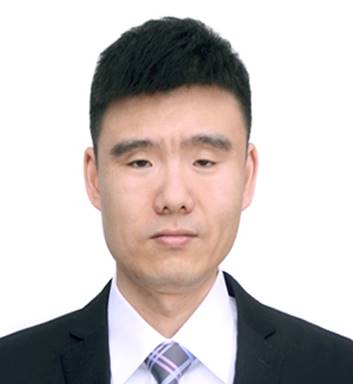
Prof. Jianpu Wang
Institute of Advanced Materials (IAM)
Nanjing Tech University
Nanjing, China
Emial: iamjpwang@njtech.eud.cn
Solution-processed light-emitting diodes (LEDs) are attractive for applications in low-cost, large-area lighting sources and displays. Organometal halide perovskites can be processed from solutions at low temperatures to form crystalline direct-bandgap semiconductors with intriguing optoelectronic properties, such as high photoluminescence yield, good charge mobility and excellent color purity. In this talk, I will present our effort to boost the efficiency of perovskite LEDs to a high level which is comparable to organic LEDs. More importantly, organic LEDs are difficult to maintain high efficiency at high current densities due to their excitonic nature and low charge mobilities. Low temperature solution-processed perovskite LEDs demonstrate remarkably high efficiency at high current densities, suggesting unique potential to achieve large size planar LEDs with high efficiency at high brightness.
Biography: Prof. Jianpu Wang has been a professor at Nanjing Tech University since 2013. His research interests are organic/perovskite semiconductor devices and device physics, aiming for display and energy applications. In 2009-2013, he was a postdoctoral research associate studying organic magnetic field effect in Cavendish Laboratory, University of Cambridge. And he did his Ph.D study also in Cavendish from 2006 to 2009, when he investigated organic semiconductor/inorganic nanocrystal devices. Prof. Wang worked as a research engineer in Samsung Electronics in South Korea in 2003-2006, for developing OLED displays by using ink-jet printing technology.
From Perovskites to Self-Trapping Excitonic Materials: Recent Advances in New Materials for RGB LEDs
 Prof. Jonathan Halpert
Prof. Jonathan Halpert
Assistant Professor
Department of Chemistry
The Hong Kong University of Science and Technology,
Hong Kong S.A.R, China
Email: jhalpert@ust.hk
Metal halide perovskites possess excellent properties for light emitting devices (LEDs), having very bright emission, high photoluminescence quantum yield, a thin emission linewidth and a composition and size tunable color range across the visible spectrum. Nanostructured films of lead-based perovskites, using CsPbBr3 and CsPbI3 have very recently been used to make high efficiency LEDs with greater than 20% external quantum efficiency (EQE = photons out per electrons in) for both green and red emitting devices. However, three colors are needed to create LED displays and blue-emitting perovskite LEDs (peLEDs) have lagged in efficiency thus far.
Here we review recent events in nanocrystalline and nanostructured perovskites and report improvements in the EQE and stability of blue emitting peLEDs. We discuss some ongoing issues with blue perovskite LED efficiency and stability such as charge injection, down-conversion via energy transfer, non-radiative recombination, and ion migration. We explore the latter effect in depth, observing ion migration effects in both the red (X=Br/I) and blue regions (Br/Cl) of the EL spectrum for mixed halide perovskites. Further effects of size and confinement are explored as a means of achieving deep blue emitting perovskite nanomaterials with high QY. In addition to improving LEDs, we also report our recent findings on shape controlled blue emitting perovskites, and other novel perovskite nanomaterials and suggest directions for future peLED research.
Reference list:
P. Vashishtha & J.E. Halpert, Chem. Mater. 2017, 29 (14), 5965-5973.
M. Cryer et al., ACS Appl. Mater. Interfaces 10 (22), 18927-18934.
P. Vashishtha et al., Chem. Mater. 2019, 31 (1), 83-89.
S.B. Shivarudraiah et al., ACS Appl. Energy Mater. 2020, 3 (6), 5620–5627.
C.H.A. Li et al., Chem. Mater. 2019, 31 (16), 6003-6032.
Y. Li et al., Chem. Mater. 2020, 32 (13), 5515–5524.
Polarized Photoluminescence from Structured Nanoparticles

Prof. Kristiaan Neyts
Ghent University,
ELIS Department,
LCP group, iGent tower, 7th floor
Technologiepark Zwijnaarde 126, 9052 Gent, BELGIUM
Email: kristiaan.neyts@ugent.be
Quantum dots efficiently transform blue photons into green or red photons by photoluminescence in quantum dot LED TVs. For spherical quantum dots, the absorption and emission are independent of the polarization of the photons. For semiconductor nanoparticles with other shapes, the absorption depends on the polarization of the incident blue photons and the emitted light can become polarized. In this presentation it is explained how photoluminescent nanoparticles can be used to generate a backlight that emits linearly polarized light. By giving the semiconductor nanoparticles a particular shape, the anisotropy of absorption and emission can be independently tuned.
Biography: Prof. Kristiaan Neyts is full professor at Ghent University in the Electronics and Information Systems department of the Faculty of Engineering Sciences and Architecture. He obtained his PhD in 1992 at UGent on thin film electroluminescence and made a post-doc at UC Berkeley in 1997-1998. Since 2004 he is heading the Liquid Crystals and Photonics group that is conducting research in the fields of liquid crystals, PZT, OLEDs, electrophoresis, solar cells and microscopy. This group of 25 researchers has expertise in device technology, numerical simulations and electro-optical characterization of photonic components. He is the promoter of 27 completed PhDs, co-author of 257 SCI papers and co-inventor of 6 granted patents.
Ultra-efficient White LEDs Using Nanomaterials in Liquid-Matrix

Prof. Sedat Nizamoglu
Department of Electrical and Electronics Engineering,
Koç University,
34450
Istanbul, Turkey
Email: snizamoglu@ku.edu.tr
Fluorescent nanomaterials such as colloidal nanocrystals and fluorescent proteins have attracted significant attention in the last decades due to their exceptional optical properties such as high photoluminescence quantum yield (PLQY) and tunable band gap. Nowadays there is a strong interest in the demonstration of efficient white LEDs using fluorescent nanomaterials for lighting and displays that can have significant environmental and economic benefits. However, their utilization for efficient solid-state lighting sources has remained a challenge due to the decrease of PLQY from the synthesis batch in the liquid state to the host matrix in the solid state, which is also known as the host material effect. As a solution, in recent years we proposed and demonstrated suppression of the host material effect by simple liquid-state integration of fluorescent materials into device architectures. In this talk, I will discuss efficient white LEDs based on colloidal nanocrystals and fluorescent proteins in liquid matrix.1-5 Our theoretical calculations predicted that the luminous efficiency of liquid white LEDs can reach over 200 lm/W.1 Therefore, white LEDs using nanomaterials in liquid-state have high promise for future lighting and display.
References
1. Sadeghi, S.; Kumar, B. G.; Melikov, R.; Aria, M. M.; Jalali, H. B.; Nizamoglu, S., Quantum dot white LEDs with high luminous efficiency. Optica 2018, 5 (7), 793-802.
2. Sadeghi, S.; Melikov, R.; Conkar, D.; Firat‐Karalar, E. N.; Nizamoglu, S., Ultra‐Efficient and High‐Quality White Light‐Emitting Devices using Fluorescent Proteins in Aqueous Medium. Advanced Materials Technologies 2020, 2000061.
3. Sadeghi, S.; Melikov, R.; Jalali, H. B.; Nizamoglu, S., Ultraefficient Green LEDs Using Quantum Dots in Liquid Matrix. IEEE Transactions on Electron Devices 2019, 66 (11), 4784-4789.
4. Sadeghi, S.; Abkenar, S. K.; Ow-Yang, C. W.; Nizamoglu, S., Efficient white LEDs using liquid-state magic-sized CdSe quantum dots. Scientific reports 2019, 9 (1), 1-9.
5. Melikov, R.; Press, D. A.; Ganesh Kumar, B.; Sadeghi, S.; Nizamoglu, S., Unravelling radiative energy transfer in solid-state lighting. Journal of Applied Physics 2018, 123 (2), 023103.
Biography: Prof. Sedat Nizamoglu is an associate professor in the department of Electrical and Electronics Engineering and the director of IDEALAB (Innovative Devices and Interfaces Laboratory) at Koc University, Istanbul, supported by ERC (European Research Council). Immediately after receiving his PhD degree at Bilkent University in 2011, he continued as a Bullock-Wellman Fellow with a joint affiliation with Harvard Medical School and Wellman Center for Photomedicine, Massachusetts General Hospital in USA. His research focuses on the demonstration of innovative bioelectronic and optoelectronic devices and interfaces for the applications to energy, medicine, and environment. He has published more than 70 research papers in prestigious journals including Nature Communications, Nature Photonics, Advanced Materials and Nano Letters. He received numerous awards such as IEEE Research Encouragement Award (Turkey), Encouragement Award by TUBITAK (Turkish NRF), Outstanding Young Scientist Award by Turkish Academy of Sciences and Science Academy, Innovation Award by European Technology Platform for Photonics and SPIE Scholarship Award in Optical Science and Engineering. He was also recognized by MIT Technology Review as Innovator Under 35 Turkey.
Ultrathin polarizers by photoalignment

Prof. Hoi-Sing Kwok
State Key Laboratory of Advanced Displays and Optoelectronics Technologies
Department of Electronics and Computer Engineering,
The Hong Kong University of Science and Technology,
Email: eekwok@ust.hk
Polarizers are needed in many opto-electronic applications. In particular, in LCD, two pieces of polarizers are needed for light modulation. In OLED, a circular polarizer is needed to reduce ambient light reflection and contrast ratio enhancement. Conventional polarizers are made of stretched polymer films such as PVA. Iodine or other dyes embedded in the polymer film are aligned by the stretching process. This 80-year old technology invented by Edwin Land is still in use nowadays. Huge quantities are made every year. For example, half a billion square meters of such stretched polarizers were made in 2018.
Several alternative approaches have been attempted, such as embedding the dye molecules in a LC polymer in a guest-host arrangement, mechanical alignment of a lyotropic liquid crystal film, and photoalignment of a dichroic dye film. All of these alternative methods do not require stretching and in principle the polarizer can be coated on flexible substrates. In this talk I shall briefly review these techniques. Emphasis will be placed on the photoalignment technique, which can potentially be the most economical and simplest method to make coatable polarizers. The following graphs show the performance of such photoaligned polarizer films.


Biography: Prof. Professor Hoi-Sing Kwok obtained his PhD from Harvard University in 1978. He taught at the State University of New York at Buffalo from 1980 to 1992. In 1992 he returned to Hong Kong to become Chair Professor at Hong Kong University of Science and Technology. Professor Kwok earlier work was on laser applications and spectroscopy. At HKUST, he is presently Director of the State Key Laboratory on Advanced Displays and Optoelectronics and Dr William Mong Chair of Nanotechnology. His current research is focused on optics and electronics of display devices. He was a White House Presidential Young Investigator in 1984. He was given the New York State Excellence Award in 1991 and the Slottow-Owaki Prize of SID in 2013. He won the SID Rajchman Prize in 2019. He is a member of the National Academy of Inventors, a member of the Asia Pacific Academy of Materials and a member of the Hong Kong Academy of Engineering Science. He is also a Fellow of IEEE, SID and OSA. Professor Kwok has published over 900 papers and holds more than 100 patents. He has also written 3 books and edited 5 conference Proceedings.
Photo-alignment of Quantum Rods for Displays and Beyond
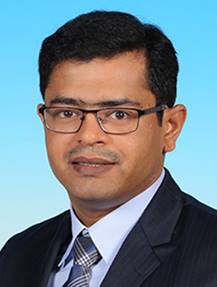
Prof. Abhishek K Srivastava
Associate Director: Centre for Display Research
Associate Editor: Journal of Society for information Display
Member: State Key Laboratory of Advanced Displays and Optoelectronics Technologies
Assistant Professor
Department of Electronics and Computer Engineering,
The Hong Kong University of Science and Technology,
Hong Kong S.A.R, China
Email: eeabhishek@ust.hk
Semiconductor quantum rods (QRs), due to their unique shape-dependent emission properties, have been a centre of attraction since the last decade [1-7]. These materials exhibit the quantum confinement effect due to their size and also show polarized photoluminescence properties. In this talk, I will discuss the high-quality alignment of the QRs showing a high polarization ratio for the emitted light. We developed the Quantum rod enhancement films (QREF) containing aligned red and green QRs, in the same film. We used Inkjet printing to print QREFs [5]. The measured polarization ratio for the emitted light from QREFs is as high as 7:1 that increases the optical efficiency of the LCD from 4.5% to 7.9%. Furthermore, we will also discuss the potential application of these QRs in LEDs and photonics.
References
- A. K. Srivastava et al. Adv. Mat. 1701091, 2017.
- J. Schneider, et al. AKS, Nano Letter, 12, 3133, 2017.
- W. Zhan, et.al. AKS, Adv. Fun. Mat., 180594, 2018.
- A. K. Srivastava et al. Adv. Sciences. 6, 1901345, 2019.
- S. Gupta, et al., AKS, Nanoscale, 11, 20837, 2019.
- M.P. Prodanov, et al., AKS, Small, 2004487, 2020.
- Y. Gao, et al., AKS, Nanoscale, Accepted, 2021.
Biography: Prof. Abhishek Kumar Srivastava is an assistant professor at the Hong Kong University of Science and Technology. He received his Ph.D. degree in 2009 from the University of Lucknow, India. His current research interests include photo-alignment technology, nanomaterials, and fast liquid crystals for advanced displays and photonic devices. He is a senior member of the Society for Information Display (SID), United States, and a member of IEEE. In 2014, he received the ILCS Early-Career Award: The Michi Nakata Prize for his early career efforts in the field of ferroelectric liquid crystals and photo-alignment. In 2018, he received the best I-zone display prototype of the year award from the SID display week for the ferroelectric liquid crystal displays. In the same year, he received the LG Bronze award from the Korean information display society for the newly developed quantum rod enhancement film. Furthermore, his research efforts have been recognized by many societies worldwide. To date, he has published 186 research papers and holds 36 patents/patent applications.
Synthesis and Polarized Emission of Lead Halide Perovskite Nanorods

Prof. Andrey L. Rogach
Department of Materials Science and Engineering, and Centre for Functional Photonics (CFP)
City University of Hong Kong, Hong Kong SAR
Email: andrey.rogach@cityu.edu.hk
Metal halide perovskites have recently emerged as a new class of efficiently emitting materials for optoelectronic applications [1,2]. Semiconductor nanorods in general and perovskite nanorods in particular offer a useful property of linearly polarized light emission, which is important for application in displays [2, 3]. I will introduce several recently developed synthetic strategies towards perovskite nanorods with strong, color tunable anisotropic emission [4-6], and discuss how the halide composition of perovskite nanorods influences their fluorescence anisotropy [7].
References
- Y. Li, X. Zhang, H. Huang, S. V. Kershaw, A. L. Rogach. Advances in Metal Halide Perovskite Nanocrystals: Synthetic Strategies, Growth Mechanisms, and Optoelectronic Applications. Mater. Today 2020, 32, 204-221.
- M. Lu, Y. Zhang, S. Wang, J. Guo, W. W. Yu, A. L. Rogach. Metal Halide Perovskite Light-Emitting Devices: Promising Technology for Next-Generation Displays. Adv. Funct. Mater. 2019, 1902008.
- A. K. Srivastava, W. Zhang, J. Schneider, J. E. Halpert, A. L. Rogach. Luminescent Down-Conversion Semiconductor Quantum Dots and Aligned Quantum Rods for Liquid Crystal Displays. Adv. Sci. 2019, 1901345.
- Y. Li, H. Huang, Y. Xiong, A. F. Richter, S. V. Kershaw, J. Feldmann, A. L. Rogach. Using Polar Alcohols for the Direct Synthesis of Cesium Lead Halide Perovskite Nanorods with Anisotropic Emission. ACS Nano 2019, 13, 8237-8245.
- S. Wang, J. Yu, M. Zhang, D. Chen, C. Li, R. Chen, G. Jia, A. L. Rogach, X. Yang. Stable, Strongly Emitting Cesium Lead Bromide Perovskite Nanorods with High Optical Gain Enabled by an Intermediate Monomer Reservoir Synthetic Strategy. NanoLett. 2019, 19, 6315-6322.
- J. Guo, Y. Fu, M. Lu, X. Zhang, S. Kershaw, J. Zhang, S. Luo, Y. Li, W. W. Yu, H. Song, A. L. Rogach, L. Zhang, X. Bai. Cd-Rich Alloyed CsPb1-xCdxBr3 Perovskite Nanorods with Tunable Blue Emission and Fermi Levels Fabricated through Crystal Phase Engineering. Adv. Sci. 2020, 2000930.
- Y. Dou, F. Cao, T. Dudka, Y. Li, S. Wang, C. Zhang, Y. Gao, X. Yang, A. L. Rogach. Lattice Distortion in Mixed-Anion Lead Halide Perovskite Nanorods Leads to their High Fluorescence Anisotropy. ACS Mater. Lett. 2020, 2, 814-820.
Biography: Prof. Andrey L. Rogach is a Chair Professor of Photonics Materials at the Department of Materials Science and Engineering, and the Founding Director of the Centre for Functional Photonics at City University of Hong Kong. He received his Ph.D. in Chemistry (1995) from the Belarusian State University in Minsk (Belarus), and worked as a staff scientist at the University of Hamburg (Germany) from 1995 to 2002. From 2002–2009 he was a lead staff scientist at the University of Munich (Germany), where he completed his habilitation in Experimental Physics. His research focuses on synthesis, assembly and optical spectroscopy of colloidal semiconductor and metal nanocrystals and their hybrid structures, and their use for energy-related applications. He authored over 500 scientific publications (Google Scholar h-index: 117) in these fields that have been extensively (over 50,000) cited, which ranked him among “100 TOP MATERIALS SCIENTISTS OF THE PAST DECADE” by Thomson Reuters (2011), and as a Highly Cited Researcher by Clarivate Analytics (2018-2020). He holds honourable appointments as an Adjunct Professor at Trinity College Dublin (Ireland) and University of Electronic Science and Technology of China, and as a Honorary Professor at Xi’An Jiaotong University, Jilin University, and Peking University Shenzhen (China). Andrey Rogach is a Fellow of the Electromagnetic Academy (USA) and serves as an Associate Editor of ACS Nano.
Surface Chemistry of Colloidal Cesium Lead Halides Perovskite Nanocrystals and its Impact on the Characteristics of Blue and Green perovskite LEDs

Dr. Maryna Bodnarchuk
Group Leader
Empa-Swiss Federal Laboratories for Materials Science and Technology, CH-8600, Dübendorf, Switzerland
Email: Maryna.Bodnarchuk@empa.ch
Colloidal organic/inorganic lead halide perovskite nanocrystals (NCs) are considered promising blue and green narrow-band emitters for the next-generation light-emitting diodes. High photoluminescence efficiencies are attained in these materials without epitaxial over-coating of the NC surfaces for electronic passivation of the surface states. The major practical bottleneck of these materials relates to their labile surface chemistry. In particular, typically used ling chain capping ligands are problematic due to their dynamic and loose binding as well as their highly insulating nature. We have recently rationalized the typical observation of a degraded luminescence upon aging or the luminescence recovery upon post-synthesis surface treatments using a simple surface-structure model, supported by DFT calculations. Healing of the surface trap states requires restoration of all damaged PbX6 octahedra and establishing a stable outer ligand shell. Restoration of such a structure, seen as an increase in the luminescence quantum efficiency to 90-100% and improvement in the over-all robustness of CsPbBr3 NCs, was attained using a facile post-synthetic treatment with a PbBr2+DDAB (didodecyldimethylammonium bromimde) mixture. In our most recent work, we have used DDAB as a sole ligand directly in the synthesis of perovskite NCs. We then used such NCs in LEDs and demonstrate high external quantum efficiencies in blue region and green region .
Biography: Dr. Maryna Bodnarchuk received her PhD degree in natural sciences from the Johannes Kepler University Linz (Austria) in 2009, worked as a postdoctoral fellow at University of Chicago and in 2011 she joined the Laboratory of Inorganic Chemistry of ETH Zurich as a Marie Heim-Vögtlin fellow and then as Ambizione Energy fellow supported by SNSF. In 2016 she was appointed as group leader in the laboratory of Thin Films and Photovoltaic at Empa - Swiss Federal Laboratories for Materials Science and Technology, Switzerland. Her research interests and areas of expertise include synthesis, self-assembly and characterization of novel inorganic nanostructures. These materials find applications in optoelectronic devices and energy storage.
Resonant perovskite nanostructures for advanced photonic applications
 Prof. S. V. Makarov
Prof. S. V. Makarov
ITMO University,
Saint Petersburg,
Russia
Email: s.makarov@metalab.ifmo.ru
Nanophotonics and meta-optics based on optically resonant all-dielectric structures is a rapidly developing research area driven by its potential applications for low-loss efficient metadevices. Recently, the study of halide perovskites has attracted enormous attention due to their exceptional optical and electrical properties. As a result, this family of materials can provide a prospective platform for modern nanophotonics [1] and meta-optics [2], allowing us to overcome many obstacles associated with the use of conventional semiconductor materials. Here, we overview the recent progress in the field of halide perovskite nanophotonics starting from single-particle light-emitting nanoantennas [3,4] and nanolasers [5] to the large-scale designs working for surface coloration, anti-reflection, and optical information encoding [6,7,8].
References:
[1] Makarov, S., Furasova, A., Tiguntseva, E., Hemmetter, A., Berestennikov, A., Pushkarev, A., Zakhidov, A. and Kivshar, Y., 2019. Advanced optical materials, 7(1), p.1800784.
[2] Berestennikov, A.S., Voroshilov, P.M., Makarov, S.V. and Kivshar, Y.S., 2019. Applied Physics Reviews, 6(3), p.031307.
[3] Tiguntseva, E.Y., Zograf, G.P., Komissarenko, F.E., Zuev, D.A., Zakhidov, A.A., Makarov, S.V. and Kivshar, Y.S., 2018. Nano letters, 18(2), pp.1185-1190.
[4] Tiguntseva, E.Y., Baranov, D.G., Pushkarev, A.P., Munkhbat, B., Komissarenko, F., Franckevicius, M., Zakhidov, A.A., Shegai, T., Kivshar, Y.S. and Makarov, S.V., 2018. Nano letters, 18(9), pp.5522-5529.
[5] Tiguntseva, E., Koshelev, K., Furasova, A., Tonkaev, P., Mikhailovskii, V., Ushakova, E.V., Baranov, D.G., Shegai, T., Zakhidov, A.A., Kivshar, Y. and Makarov, S.V., 2020. ACS Nano 13 (4), 4140-4147.
[6] Zhizhchenko, A., Syubaev, S., Berestennikov, A., Yulin, A.V., Porfirev, A., Pushkarev, A., Shishkin, I., Golokhvast, K., Bogdanov, A.A., Zakhidov, A.A. and Kuchmizhak, A.A., 2019. ACS nano, 13(4), pp.4140-4147.
[7] Zhizhchenko, A.Y., Tonkaev, P., Gets, D., Larin, A., Zuev, D., Starikov, S., Pustovalov, E.V., Zakharenko, A.M., Kulinich, S.A., Juodkazis, S. and Kuchmizhak, A.A., 2020. Small, 16(19), p.2000410.
[8] Trofimov, P., Pushkarev, A.P., Sinev, I.S., Fedorov, V.V., Bruyère, S., Bolshakov, A., Mukhin, I.S. and Makarov, S.V., 2020. ACS nano, 14(7), pp.8126-8134.
Biography: Prof. Sergey Makarov received a Ph.D. degree in 2014 at the Lebedev Physical Institute of the Russian Academy of Sciences (Moscow, Russia), and Habilitated at the ITMO University in 2018 (St. Petersburg, Russia). The topics of his research activity include nanophotonics, halide perovskites, laser-matter interaction, and nanotechnology.Currently, he is Professor, Head of Laboratory of Hybrid Nanophotonics and Optoelectronics, as well as Director of Shared Research Facilities on Nanotechnology at the ITMO University. He was a long-term visiting research fellow at Australian National University, City University of New York, and Vienna Technological University. He was awarded by Presidential Award for Young Researchers, Medal of Russian Academy of Sciences for Young Researchers, Gold Medal of Alferov’s Foundation, Saint-Petersburg Government Award in the field of technology, and many others.
Cesium and Formamidinium Lead Halide Perovskite Nanocrystals: Genesis and Present Developments
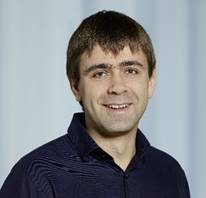
Prof. (Dr) Maksym V. Kovalenko
1 ETH Zürich, Department of Chemistry and Applied Biosciences, CH-8093, Zurich, Switzerland
2 Empa-Swiss Federal Laboratories for Materials Science and Technology, CH-8600, Dübendorf, Switzerland
E-mail address: mvkovalenko@ethz.ch
We discuss the discovery and recent developments of colloidal lead halide perovskite nanocrystals (LHP NCs, NCs, A=Cs+, FA+, FA=formamidinium; X=Cl, Br, I) [1-5]. LHP NCs exhibit spectrally narrow (<100 meV) fluorescence, originating form bright triplet excitons [6], and tunable over the entire visible spectral region of 400-800 nm. Cs- and FA-based perovskite NCs are promising for LCD displays, for light-emitting diodes and as precursors/inks for perovskite solar cells. Perovskite NCs also readily form long-range ordered superlattices, which exhibit accelerated coherent emission (superfluorescence) [7]. Unique structure engineerability of perovskites allows for (nearly) independent tuning of the emission color and radiative rates, which can be used in printable unicolor security tags [8].
- L. Protesescu et al. Nano Letters 2015, 15, 3692–3696
- L. Protesescu et al. J. Am. Chem. Soc. 2016, 138, 14202–14205
- L. Protesescu et al. ACS Nano 2017, 11, 3119–3134
- M. V. Kovalenko et al. Science 2017, 358, 745-750
- Q.A. Akkerman et al. Nature Materials 2018, 17, 394–405
- M. A. Becker et al, Nature 2018, 553, 189-193
- G. Raino et al. Nature 2018, 563, 671–675
- S. Yakunin et al. Nature Comm. 2021, in print
Biography: Prof. Maksym Kovalenko is a professor at ETH Zürich (Swiss Federal Institute of Technilogy in Zürich), Switzerland. He received his PhD degree in nanoscience and nanotechnology from Johannes Kepler University Linz, Austria, in 2007. He then joined the University of Chicago as a postdoctoral fellow, studying the surface chemistry and self-assembly of colloidal nanocrystals. In 2011, Kovalenko joined ETH Zürich and Empa (Swiss Federal Laboratories for Materials Science and Technology) as a tenure-track assistant professor, an associate professor in 2017, and a full professor in 2020. His research interests include chemistry, physics, and applications of functional inorganic materials, including colloidal quantum dots, novel solid-state compounds, and materials for electrochemical energy storage. Present research efforts of the Functional Inorganic Materials group concern: (i) the precision synthesis of highly luminescent semiconductor nanocrystals; (ii) nanocrystal surface chemistry; (iii) exploration of novel semiconductor materials by solution- and solid-state synthesis; (iv) novel semiconductors for hard radiation detection; (iv) novel materials and concepts for Li-ion and post-Li-ion rechargeable batteries. Many of these activities are strongly linked to industrial partners. Academic collaborations involve various groups ranging from first-principles theory of materials to applications in photovoltaics and thermoelectrics He has co-authored 285 publications, 3 book chapters, and holds 12 patent applications. He has been the recipient of highly prestigious awards including ERC Consolidator Grant (2018), ERC Starting Grant (2012), Ruzicka Preis (2013), and Werner Prize (2016). He is a Clarivate Highly Cited Researcher since 2018. He also serves as an associate editor of the Chemistry of Materials.
